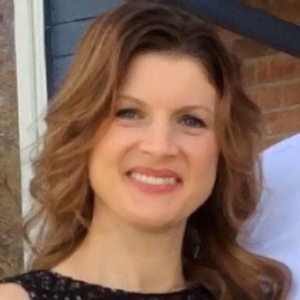One of the most impactful learning experiences from the ATE Principal Investigators Conference I attended in October 2016 was the growing use of Business and Industry Leadership Teams (BILT) partnerships in developing and implementing new STEM curriculum throughout the country. This need for cross-sector partnerships has become apparent and reinforced through specific National Science Foundation (NSF) grants.
The need for empirical data about networks and collaborations is increasing within the evaluation realm, and social network surveys are one method of quickly and easily gathering that data. Social network surveys come in a variety of forms. The social network survey I have used is in a roster format. Each participant of the program is listed, and each individual completes the survey by selecting which option best describes their relationships with one another. The options vary in degree from not knowing that person at one extreme, to having formally collaborated with that person at the other extreme. In the past, data from these types of surveys was analyzed through social network analysis, which necessitated a large amount of programming knowledge. Due to recent technological advancements, there are new social network analysis programs that make analyzing this data more user-friendly for non-programmers. I have worked on an NSF-funded project at the University of Nebraska at Oaha where the goal is to provide professional development and facilitate the growth of a network for middle school teachers in order to create and implement computer science lessons into their current curriculum (visit the SPARCS website). One of the methods for evaluating the facilitation of the network is through a social network analysis questionnaire. This method has proved very helpful in determining the extent to which the professional relationships of the cohort members have evolved over the course of their year-long experience within the program.
The social network analysis program I have been using is known as NodeXL and is an Excel add-in. It is very user-friendly and can easily be used to generate quantitative data on network development. I was able to take the data gathered from the social network analysis, conduct research, and present my article, “Identification of the Emergent Leaders within a CSE Professional Development Program,” at an international conference in Germany. While the article is not focused on evaluation, it does review the survey instrument itself. You may access the article through this link (although I think your organization must have access to ACM): Tracie Evans Reding WiPSCE Article. The article is also posted on my Academia.edu page.
Another funding strand emphasizing networks through the National Science Foundation is known as Inclusion across the Nation of Communities of Learners of Underrepresented Discoverers in Engineering and Science (INCLUDES). The long-term goal of NSF INCLUDES is to “support innovative models, networks, partnerships, technical capabilities and research that will enable the U.S. science and engineering workforce to thrive by ensuring that traditionally underrepresented and underserved groups are represented in percentages comparable to their representation in the U.S. population.” Noted in the synopsis for this funding opportunity is the importance of “efforts to create networked relationships among organizations whose goals include developing talent from all sectors of society to build the STEM workforce.” The increased funding available for cross-sector collaborations makes it imperative that evaluators are able to empirically measure these collaborations. While the notion of “networks” is not a new one, the availability of resources such as NodeXL will make the evaluation of these networks much easier.
Full Citation for Article:
Evans Reding, T., Dorn, B., Grandgenett, N., Siy, H., Youn, J., Zhu, Q., Engelmann, C. (2016). Identification of the Emergent Teacher Leaders within a CSE Professional Development Program. Proceedings for the 11th Workshop in Primary and Secondary Computing Education. Munster, Germany: ACM.

Except where noted, all content on this website is licensed under a Creative Commons Attribution-NonCommercial-ShareAlike 4.0 International License.





 EvaluATE is supported by the National Science Foundation under grant numbers 0802245, 1204683, 1600992, and 1841783. Any opinions, findings, and conclusions or recommendations expressed on this site are those of the authors and do not necessarily reflect the views of the National Science Foundation.
EvaluATE is supported by the National Science Foundation under grant numbers 0802245, 1204683, 1600992, and 1841783. Any opinions, findings, and conclusions or recommendations expressed on this site are those of the authors and do not necessarily reflect the views of the National Science Foundation.